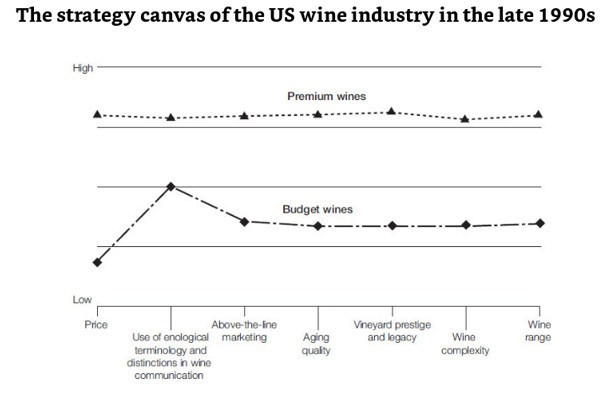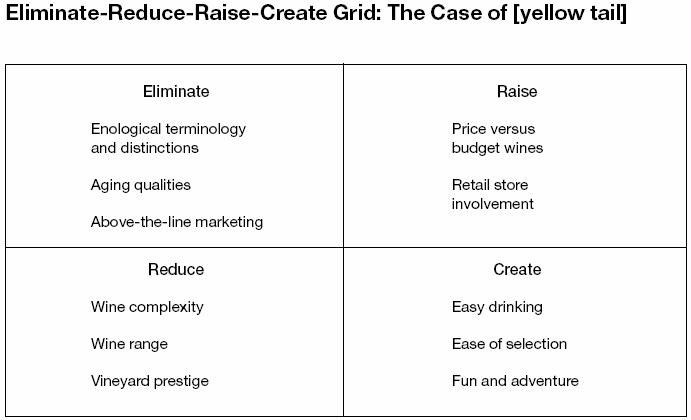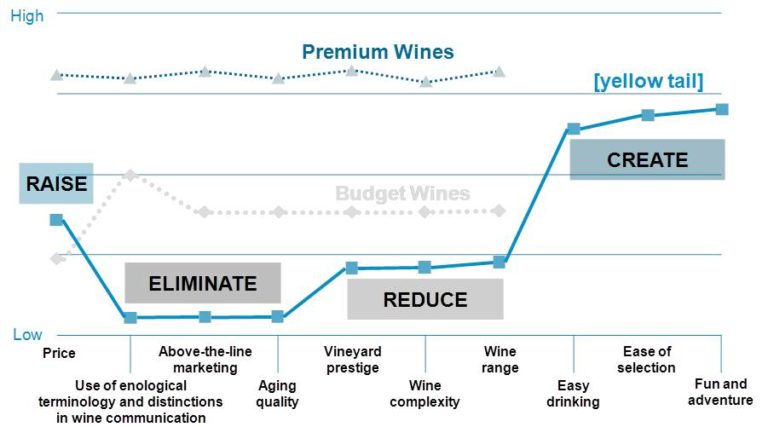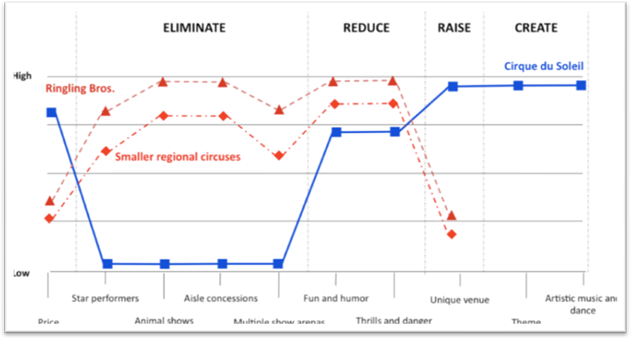How to Create a Truly Innovative and Sound Business Strategy
My pick: Blue Ocean Strategy by W. Chan Kim & Renée Mauborgue
Approximate read time: 10 minutes
Strategy in business as a discipline has only been around for about 60 years. It makes sense that business would look to other existing frameworks of strategy in search of gaining the upper hand. The authors of such books (or strategies themselves) are authorities- generals, masters, grandmasters, champions... Business has been described in terms of battles and wars, mano a mano combat, as a chess or poker match. Boundaries of confinement are a defining feature in games and war. Whether confinement by design (as in chess) or by circumstance (as in war), boundaries dictate action and prudent planning.
Even contemporary business strategy models like Porter’s Five Forces and SWOT have implicit and explicit constructs of confinement. The models by design deny the strategist a degree of freedom, demanding a conclusion of competition in an enclosed space, and making strategy performance a zero-sum game.
The departure of Blue Ocean Strategy from the main vein of other business strategy frameworks is in its sharp divergence from a positionality of operating within a closed system. Rather, it promotes creating uncontested market space to make the competition irrelevant. Profitable growth is captured not at the expense of other players, but by the sole entity in an open space of their own creation.
Blue Ocean Strategy challenges several beliefs other strategies are built on with five main points of distinction:
Competition should not occupy the center of strategic thinking. The customer, not competition, is the core of strategy. Instead of responding to competition the focus is on understanding how to deliver a leap in value to buyers.
Industry structure is not given; it can be shaped. Strategy can shape market and industry structure in an organization’s favor to create new market space beyond the constraints of cognitive boundaries.
Strategic creativity can be unlocked systematically. Innovation and creativity need not be accepted as unknowable and random. Linking innovation to value and reconstructing industry boundaries in an opportunity-maximizing, risk-minimizing way can be approached with the right frameworks, tools, and methodologies.
Execution can be built into strategy formulation. Fair process prepares the ground for strategy implementation by aligning the hearts and minds of the organization’s people, allowing companies to implement strategic shifts fast at low cost.
A step-by-step model for creating strategy. A prescriptive, not descriptive model for formulating innovative and wealth creating strategies.
Value Innovation
Value innovation is the cornerstone of blue ocean strategy. It is the process and product of creating a leap in value for buyers and the company, thereby opening up new and uncontested market space.
It places equal emphasis on value and innovation. Value alone is insufficient to make you stand out. Innovation alone tends to be technology-driven, or market-pioneering, something buyers may not be ready for. Value innovation is achieved when companies align innovation with utility, price, and cost positions. Those that seek to create blue oceans (uncontested market space) pursue differentiation and low cost simultaneously.
The formulation and execution of value innovation is done with four analytical tools and frameworks: the strategy canvas, the four actions framework, the eliminate-reduce-raise-create grid, and the six paths framework. Together they create an actionable system for developing a blue ocean strategy.
The Strategy Canvas
The strategy canvas is central to value innovation. As a diagnostic tool, it captures the current state of play in the known market space. As an action framework, it reveals possibilities of distinction for creating a new strategic profile.
Its design is simple- the horizontal axis captures the range of factors the industry competes on and invests in. The vertical axis, the offering level that buyers receive across each of the key features. The resulting strategic profiles within an industry are expressed in its value curves- a graphic depiction of a company’s relative performance across its industry’s factors of competition.
A fundamental shift in the strategy canvas of an industry requires a shift in focus from competitors to alternatives, and from customers to noncustomers of the industry. To craft a new value curve, buyer value elements are reconstructed with the four actions framework.
The Four Actions Framework
There are four key questions to challenge an industry’s strategic logic and business model:
- Which of the factors that the industry takes for granted should be eliminated?
- Which factors should be reduced well below the industry’s standard?
- Which factors should be raised well above the industry’s standard?
- Which factors should be created that the industry has never offered?
Looking at what can be eliminated and reduced gives insight into how to drop cost structure relative to competitors. The factors of what should be raised or created provide insight into lifting buyer value and creating demand.
A supplementary analytic, the eliminate-reduce-raise-create grid, helps companies act on the four questions, and create a new value curve.
The Eliminate-Reduce-Raise-Create Grid
The E-R-R-C grid gives companies four benefits:
- It pushes companies to break the value-cost trade-off
- It flags companies that are overengineering products and services, without regard to cost structure
- It is easily understood and disseminated throughout the organization
- It drives companies to scrutinize every factor of the industry they are competing in, and assumptions about themselves
Strategy Canvas and E-R-R-C for [yellow tail]
Strategy Canvas of Cirque du Soleil
Three Characteristics of a Good Strategy
In the above examples of the strategy canvases of [yellow tail], Cirque du Soleil, and Southwest Airlines, it’s easy to see the unique and exceptional value curves each company created as their blue ocean. Each show three apparent characteristics:
Focus: The companies only focused on select factors to invest in rather than attempting to compete across all of them.
Divergence: By eliminating, reducing, raising, and creating, each company created a unique value curve, setting them apart from their reactionary competitors.
A Compelling Tagline: Each has a clear-cut and compelling tagline discernible simply by looking at their value curve. For example, Southwest Airlines’ could be, “The speed of a plane at the price of a car- whenever you need it.”
The Six Paths Framework
This framework addresses the first principle of blue ocean strategy: to reconstruct market boundaries to break from the competition, by looking at familiar data in a new perspective. Because of the inherent search risk managers face with the task, the six paths challenge the fundamental assumptions underlying many companies’ strategies to lead them toward blue oceans.
Path 1: Look Across Alternative Industries
Companies compete with firms in their own industry and companies that produce alternative products and services. Alternatives (products or service that have different function and forms but the same purpose) differ from substitutes (products or services that have different forms but offer the same functionality or core utility). If you’re planning on going out for two hours, do you go to the movies? Get a massage? Read in a local café? Each business competes in some way for those two hours. Think Southwest Airlines and rental car agencies.
Path 2: Look Across Strategic Groups Within Industries
A strategic group is a group of companies within an industry that pursue a similar strategy. They can generally be ranked on two dimensions: price and performance. BMW, Mercedes, and Jaguar are an example of such a group. Toyota’s Lexus created a blue ocean by offering the same quality as the high-end group, at a lower price, closer to that of Cadillac and Lincoln.
Path 3: Look Across the Chain of Buyers
The buying decision is directly or indirectly that of a chain of buyers: purchasers, users, and influencers. The IT person might be the buyer for the broker’s computer setup, but the broker, the actual user, might prefer something very different. Or consider the many bartenders that look to a handful of bartending legends when deciding which bitters to opt for in certain cocktails. The few who blog but have a massive following show what potent influencers they are.
Path 4: Look Across Complementary Product and Service Offerings
A product’s value is usually complemented by other products and services. Consider what happens before, during, or after the product is used. Maybe there are headaches associated with the use of the product that are simply taken for granted- the mineral buildup from the water in a tea kettle, the construction materials of a bus that weigh it, and its mpg down. Maybe the product is difficult to recycle… Finding the total solution buyers seek may unlock unseen value, and open up a blue ocean. Thanks to Dyson we’ve got bagless vacuum cleaners.
Path 5: Look Across Functional or Emotional Appeal to Buyers
Industries can generally be described as either functionally or emotionally oriented, and tend to become entrenched in either positionality. By introducing an emotional element to a typically functionally oriented industry, or more function to an emotionally oriented industry, a company may find uncontested market space. A few examples:
Starbucks shifted its focus from commodity market sales to an emotional atmosphere.
Swatch switched focus from the functionally driven budget watch industry to an emotionally driven fashion statement.
The Body Shop transformed the emotionally driven cosmetics industry into a functional cosmetics house.
Charles Schwab transformed an industry traditionally based on personal relationships into a high-performance, low-cost functional business.
Path 6: Look Across Time
Looking across time means finding insight in observable trends. As a basis of blue ocean strategy, the assessment of trends across time requires that they are decisive to the business, irreversible, and have a clear trajectory. Consider what the trend would look like if taken to its logical conclusion.
Apple did this with iTunes. Seeing the trend of illegal music downloading with poor sound quality and limited scope of options, it created a platform that addressed all of those issues. Customers didn’t even need to buy the whole album. CNN built on the trend of globalization, creating the first real-time twenty-four-hour global news network. Cisco Systems saw the demand for high-speed data exchange and developed networking devices offering fast data exchanges in a seamless networking environment.
Why this book is my pick
Industry and market boundaries are often defined by assumptions each of the players have come to accept as certain. The self-made illusion of boundaries leads companies to benchmark others in the space, to compete by outsmarting and outperforming competition in an enclosed sphere where the gain of one comes at the loss of another.
Kim and Mauborgue based Blue Ocean Strategy on a study of 150 strategic moves spanning more than 100 years across 30 industries. Their research shows how a plethora of companies moved outside of competing space to stand alone in a space of their own making. The framework is both systematic for analysis, and a step-by-step guide for finding and operating within uncontested market space.



